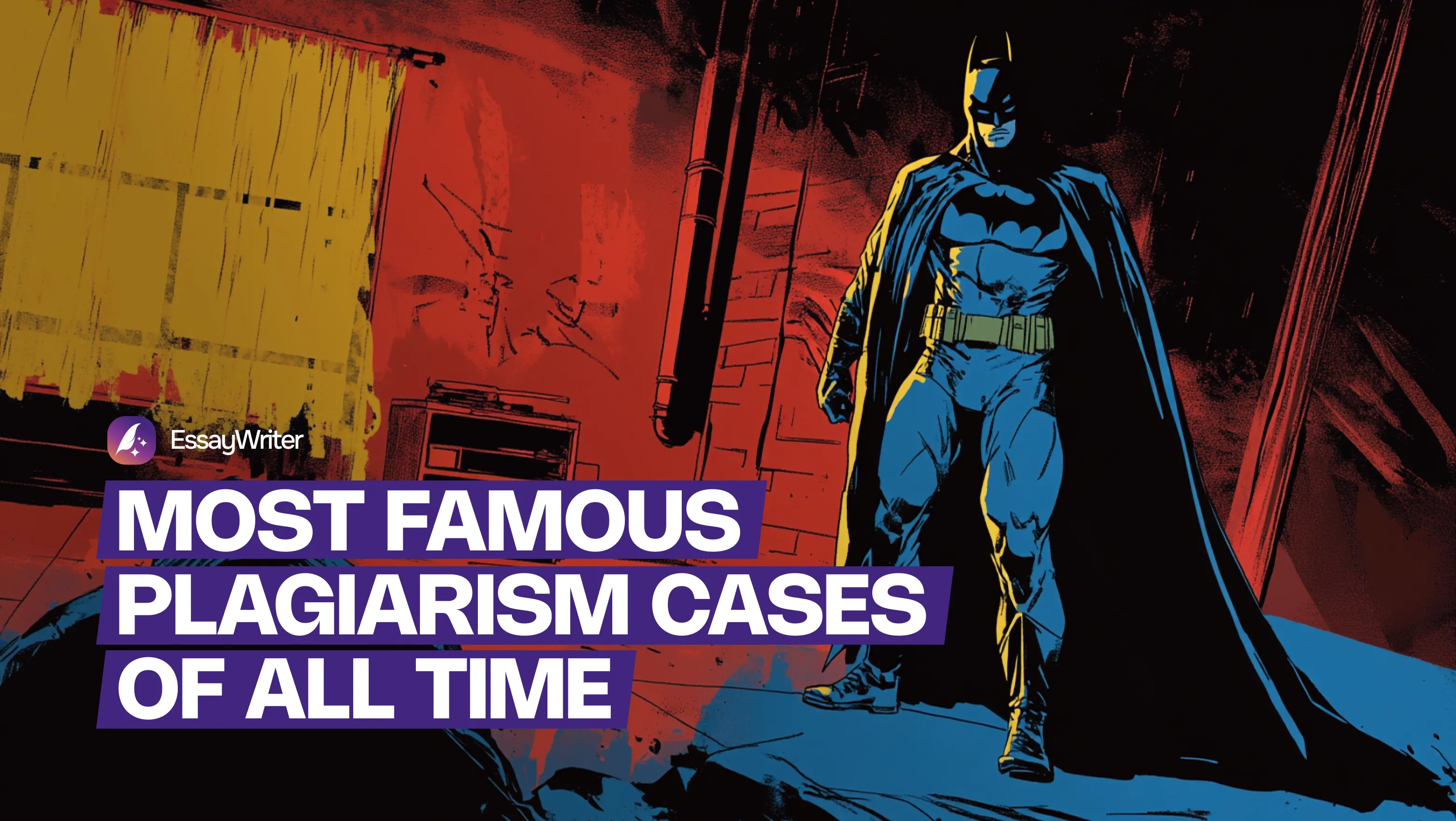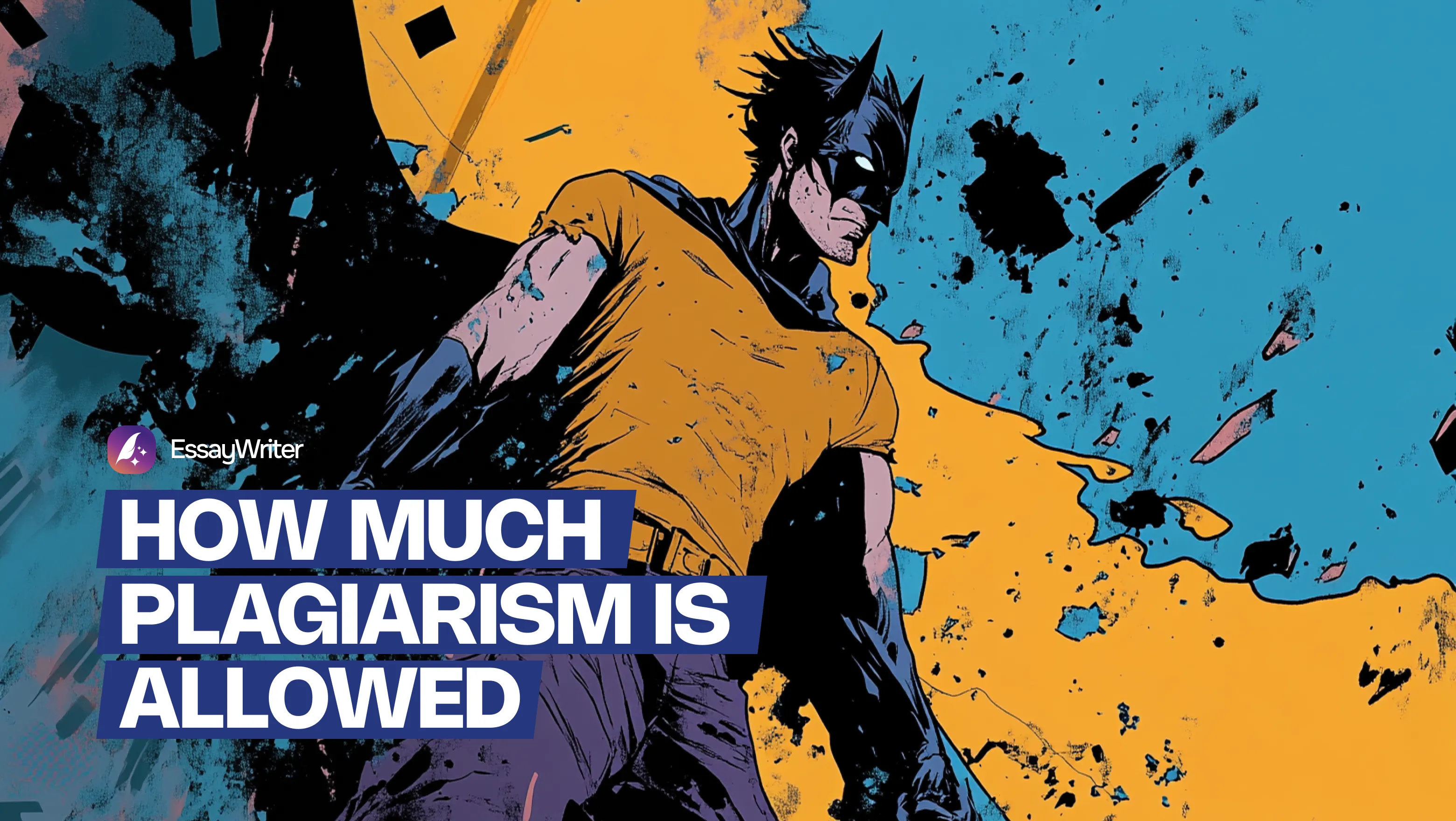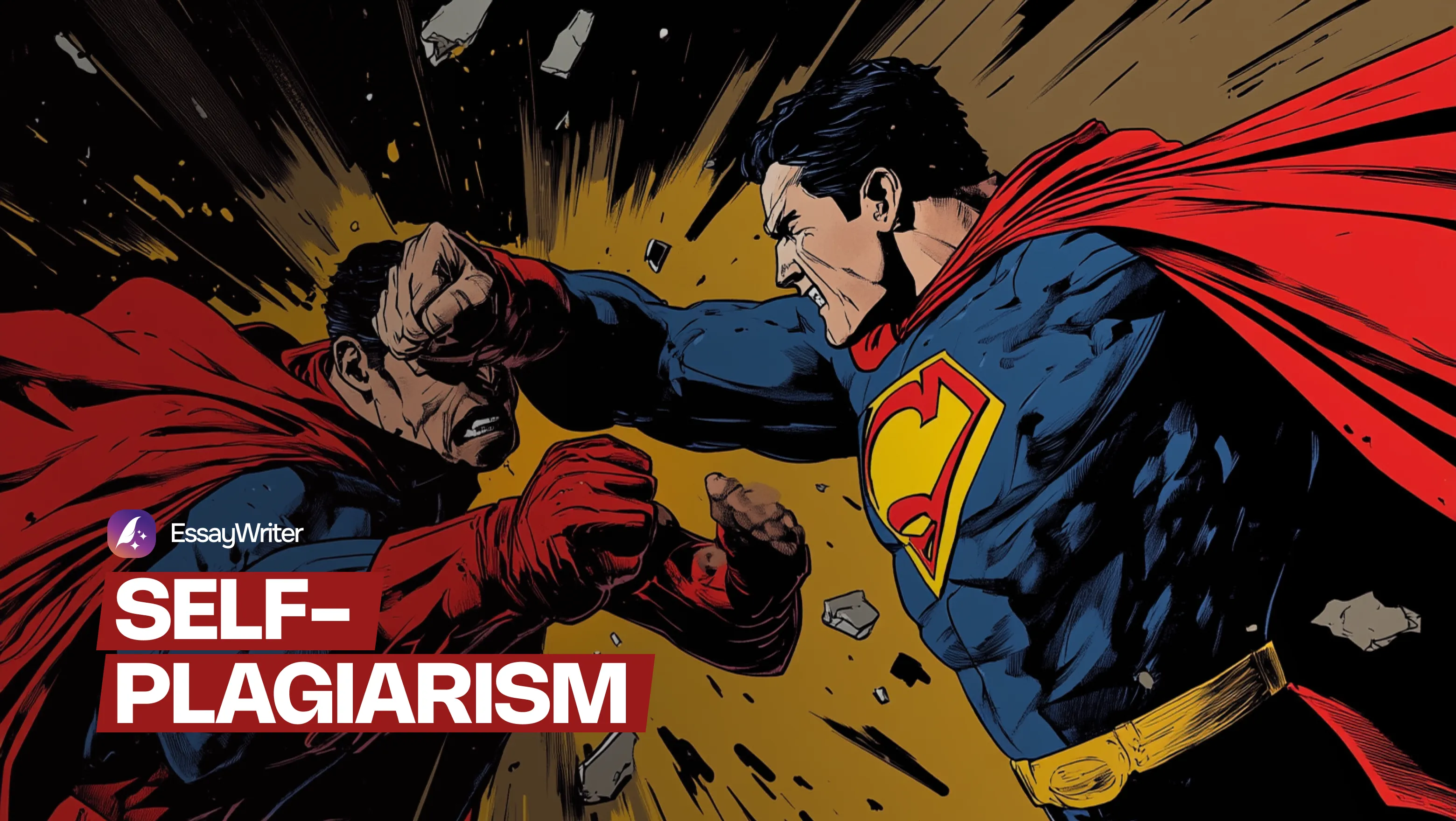Some nights, the hardest part of an essay isn’t the research or the editing. It’s finding that first idea that doesn’t feel flat. You’re sitting there with coffee going cold, cursor blinking, and your brain doing a convincing impression of a loading icon. That’s when you need to brainstorm.
Here’s the list of the five best techniques you can try:
- Freewriting
- Mind Mapping
- Clustering
- Bullet Listing
- Venn Diagram
In this article, we’ll walk through practical brainstorming techniques for students and ways to turn half-formed thoughts into something organized enough to write about.
And when the ideas are flowing but shaping them into an actual paper feels like climbing a wall, that's when EssayWriter can step in. Our essay writer tool will give you structure, feedback, and support without stealing the creative part from you.
Writing Doesn’t Have to Be Solo
Get expert guidance on assignments, essays, and research whenever you need it.
Order Now
Brainstorming Techniques for Writing Content
You’ll see ten different techniques here, some of them quick, others visual, structured, or free-form. Each one works for a different kind of thinker. Some are best for sprinting past a block. Others for digging deep into a topic. All of them can help you get from ‘no clue where to start’ to ‘I’ve got a plan.’
Freewriting
This is one of the most practical brainstorming methods for writing, and it means brainstorming without rules. When you’re overthinking, this one really comes in handy. You set a timer, and you jot down your thoughts about the topic, around the topic, even off the topic if that’s where your brain wants to go.
How to do it:
- Set a timer for 10-15 minutes
- Write continuously without editing
- Ignore mistakes; keep going
For example, if you’re working on an essay on climate change, you might spill out scattered notes about weather patterns, personal experiences, and recent news stories. It’s messy and that’s the point. The more you push past your internal editor, the easier it is to find that first spark worth developing. Freewriting works especially well during late-night study sessions when perfectionism is your worst enemy.
Clustering
Clustering is like an idea of cartography: you’re making a map of where your thoughts want to land. This one helps when you open your laptop and type your topic, and your brain freezes because you can’t see how one idea connects to another.
Steps to try:
- Write your topic in the middle of a page
- Draw lines to related words or phrases
- Keep adding branches for sub-ideas
- Don’t censor anything, not even random words, can spark insight
.webp)
Say you’re planning a paper on social media’s impact. You might branch into 'mental health,' 'marketing,' and 'friendship.' From 'mental health,' you branch again: 'sleep,' 'self-esteem,' 'screen time.' By the time you stop, you’ve got a web that shows you not just what to cover, but how the pieces connect. It’s a quick fix for that frozen feeling when you can’t see how ideas relate.
Cube Method
Your topic feels one-dimensional because you’ve only looked at it from one side. The cube method forces you to turn a topic over in your hands and look at it from all sides. Six of them, to be exact.
How to use it:
- Choose a topic and 'roll' it through six perspectives: describe, compare, associate, analyze, apply, and argue
- Spend a few minutes on each angle
- Write down anything that comes to mind, no matter how basic
For example, for a history essay on the printing press, you might describe its invention, compare it to modern media, associate it with literacy growth, analyze its political impact, apply it to today’s information spread, and argue its influence on democracy. By the time you’ve 'rolled' your cube, you’ll have more material than you expected.
If your assignment is a history paper about the printing press, you describe its invention(1). Compare it to today’s digital publishing(2). Associate it with literacy growth(3). Analyze its political impact(4). Apply it to current information sharing(5). Argue for its influence on democracy(6).
By the end, you’ve got a 360° view.
Bulleting
If your brain is too tired for fancy mind maps, bulleting is the fastest way to dump ideas before they slip away. The challenge here is chaos. Without structure, notes can quickly turn into a jumble.
Steps to follow:
- Write your main topic at the top
- List short, clear points underneath
- Group similar points together
- Keep each bullet under one line
If you’re preparing a group presentation on renewable energy, your bullets might be 'solar panels,' 'wind farms,' 'hydro plants,' and 'geothermal energy.' Later, you can expand each into its own section. Bulleting gives you a quick, no-pressure way to catch ideas mid-flow.
Mind Mapping
Mind mapping is like clustering, only a bit more deliberate. It’s for seeing how your ideas connect. You’ve gathered research, but your notes feel like a pile of puzzle pieces. Mind mapping helps you see how they fit together.
How to set it up:
- Central topic in the middle
- Branches for main themes
- Smaller branches for supporting details or examples
- Colors or symbols if it helps you think visually
.webp)
If your next big essay is on space exploration. You drop 'Space Exploration' in the center of the page, then branch out into 'History,' 'Technology,' and 'Future Missions.' Under each, you throw in quick hits, like Apollo missions, the ISS, Mars rovers, etc.
If you think in images, it’s satisfying to see the topic sprawl out while you sip your third cup of coffee in the library. And if you’re more of a 'just get words down' person, the map still gives you a bare-bones structure to build on later.
Venn Diagram
A Venn diagram is for when you need to compare and contrast, but still keep track of the overlaps. You draw two or more overlapping circles, label them with your topics, and fill each section with differences or similarities. This is especially useful for essays that need a balanced view of multiple subjects.
Quick guide:
- Draw at least two overlapping circles
- Label each with your topics
- Write differences in the outer parts, similarities in the overlap
.webp)
Example: for an assignment on online vs. in-person learning, one circle might hold 'flexible schedule' and the other 'campus resources.' The overlap could be 'student collaboration' or 'access to instructors.' In ten minutes, you’ve got a clear visual on which to base your essay structure.
Tree Diagram
A tree diagram organizes information from general to specific. You place your main topic at the top, then branch down into categories, and from there into more detailed points. It’s ideal for essays or reports that need a clear hierarchy.
How to do it:
- Main idea at the top
- Branches into major categories
- Details under each category
.webp)
Say your topic is artificial intelligence. Your first branches could be 'Applications,' 'Ethics,' and 'Future Trends.' Under 'Applications,' you might list 'healthcare,' 'education,' and 'transport.' This structure shows you exactly where each idea fits.
If you want to avoid messy organization issues, check AI writing mistakes for tips.
T Diagram
Sometimes you need to weigh two sides without losing track of details. A T diagram lets you compare two sides of an argument without losing track of details. You draw a large 'T' and label each column with a perspective, like 'Pros' and 'Cons.'
Steps to try:
- Draw a large 'T'
- Label the columns for two perspectives (e.g., pros and cons)
- Fill each side with short points
- Compare side-by-side
.webp)
Example: deciding whether to study abroad. One column might list 'cultural experience,' 'language skills,' and 'career opportunities,' while the other lists 'cost,' 'homesickness,' and 'visa paperwork.' The power here is simplicity. You can spot which side has more weight before you commit to an argument.
Journalistic Questions
With this method, you’re asking the basic questions journalists live by: Who? What? When? Where? Why? How? If you’ve picked a topic but can’t find enough angles to explore, journalistic questions help you dig deeper.
- How to apply them:
- Ask: Who? What? When? Where? Why? How?
- Answer each in short bursts
- Don’t skip a question, even if it feels obvious
If you’re writing about the rise of e-sports, 'Who?' could be professional players, 'What?' is competitive gaming, 'Why?' can be career opportunities, community, and so on. By the end, you’ve covered multiple layers of your subject.
Brainwriting
It’s like brainstorming but without speaking. If you’re in a group project, the loudest voice always wins. But with brainwriting, each person in a group writes their ideas down silently, then passes them on for others to add to, as a result, leveling the playing field.
How to make it work:
- Give everyone paper or open a shared doc
- Write ideas silently for 5 minutes
- Pass them to the next person to add more
- Repeat for several rounds
This way, quieter members still contribute, and you end up with a wider variety of ideas. If your sociology group is designing an urban space project, one note on ‘green spaces’ might inspire another’s ‘community gardens,’ which leads to ‘local farmers markets.’
Why Use Brainstorming for Writing?
Using the right brainstorming strategies for writing makes all the difference when you have a few scattered thoughts but no structure. It turns a blank page into a clear plan and sets you up for success before you draft your first sentence.
Here’s what different types of brainstorming can do for you:
- Sparks creative ideas you wouldn’t find under pressure
- Organizes scattered thoughts into categories you can work with
- Shows research gaps before you spend hours on the wrong track
- Makes big topics less intimidating by breaking them into smaller parts
- Gives everyone in a group a fair shot at contributing, without one voice taking over
- Boosts confidence before you write the first draft
- Keeps deadline stress in check by giving you a starting point
When the brainstorming process becomes part of your routine, writing stops feeling like guesswork and starts feeling like a step-by-step path.
The Bottom Line
Strong writing starts way before you open a doc: in the moment you decide how you’ll shape your ideas. Brainstorming is less about dumping random phrases onto a page and more about giving yourself a clear map before the journey.
Picture this: it’s 11:47 p.m., your Wi-Fi just glitched during a group chat, and your outline is still a scattered mess. Brainstorming brings the structure back before panic takes over.
And if you hit that ‘out of steam’ point (we all do) EssayWriter is there to help refine what you’ve started, keep your argument straight, and make sure the work you’ve put in doesn’t get lost in the scramble.
FAQs
Why Is Brainstorming Important in Writing?
How to Brainstorm for Writing?
What Are the Brainstorming Strategies for Writing?
- Gregersen, H. (2018, March). Better brainstorming. Harvard Business Review. https://hbr.org/2018/03/better-brainstorming
- Northern Illinois University, Center for Innovative Teaching and Learning. (n.d.). Brainstorming – Instructional guide. Northern Illinois University. https://www.niu.edu/citl/resources/guides/instructional-guide/brainstorming.shtml
- Smith, J. E. (n.d.). Brainstorming: Generating ideas in a group setting. Christian Education Journal, 26. Southern Nazarene University. https://home.snu.edu/~jsmith/library/body/v26.pdf
Recommended articles
.webp)

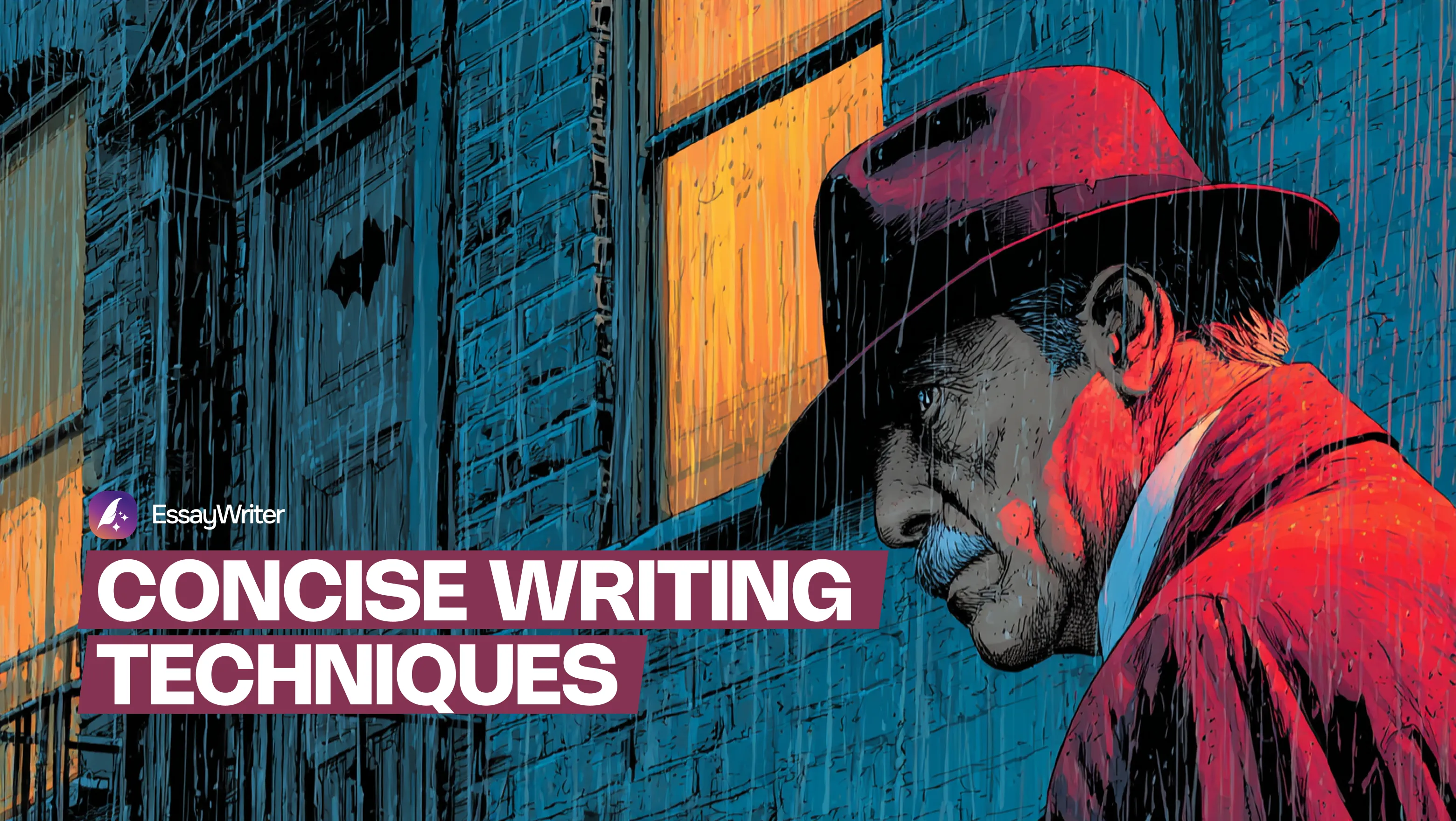
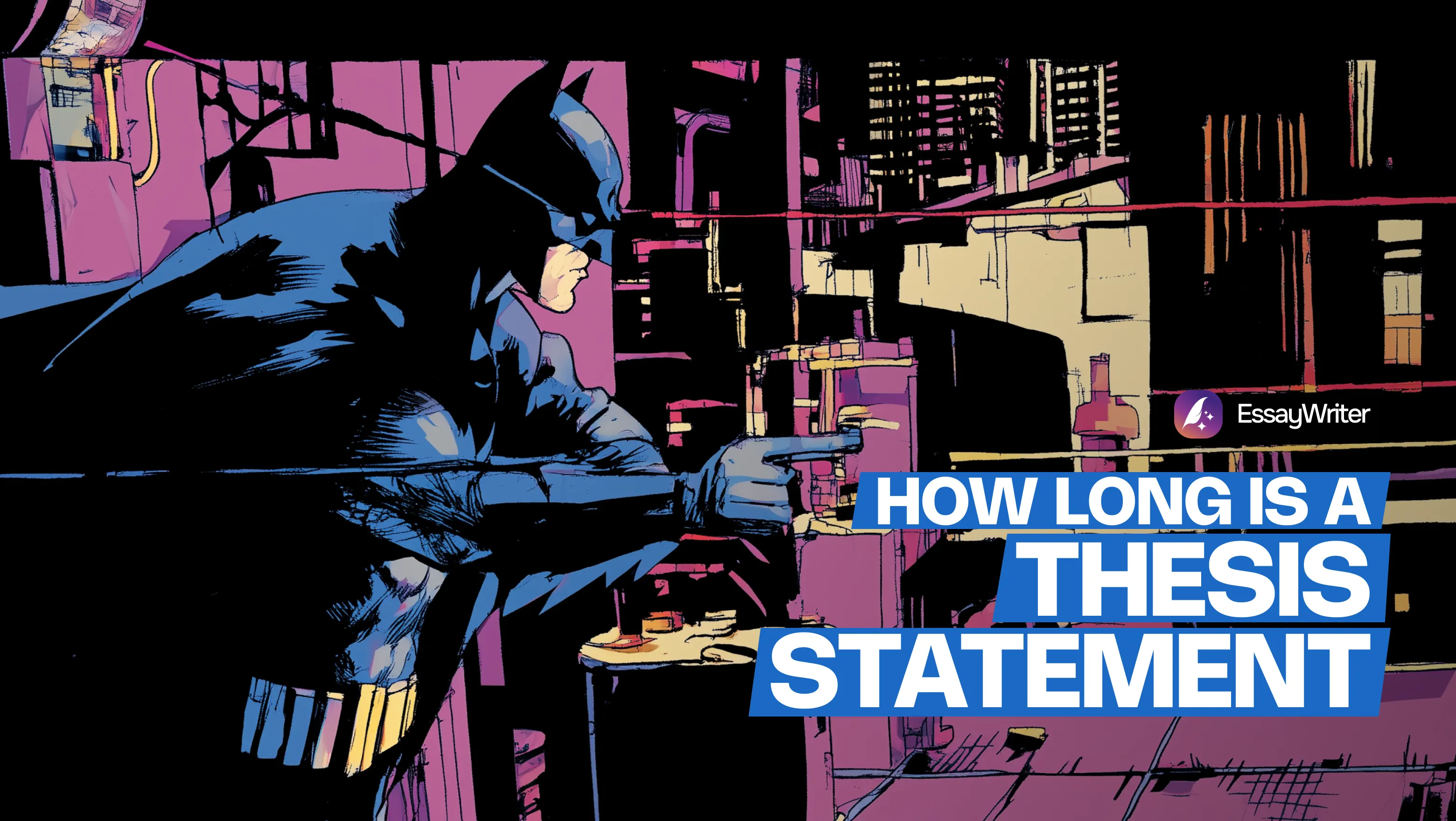
.webp)
.webp)
.webp)
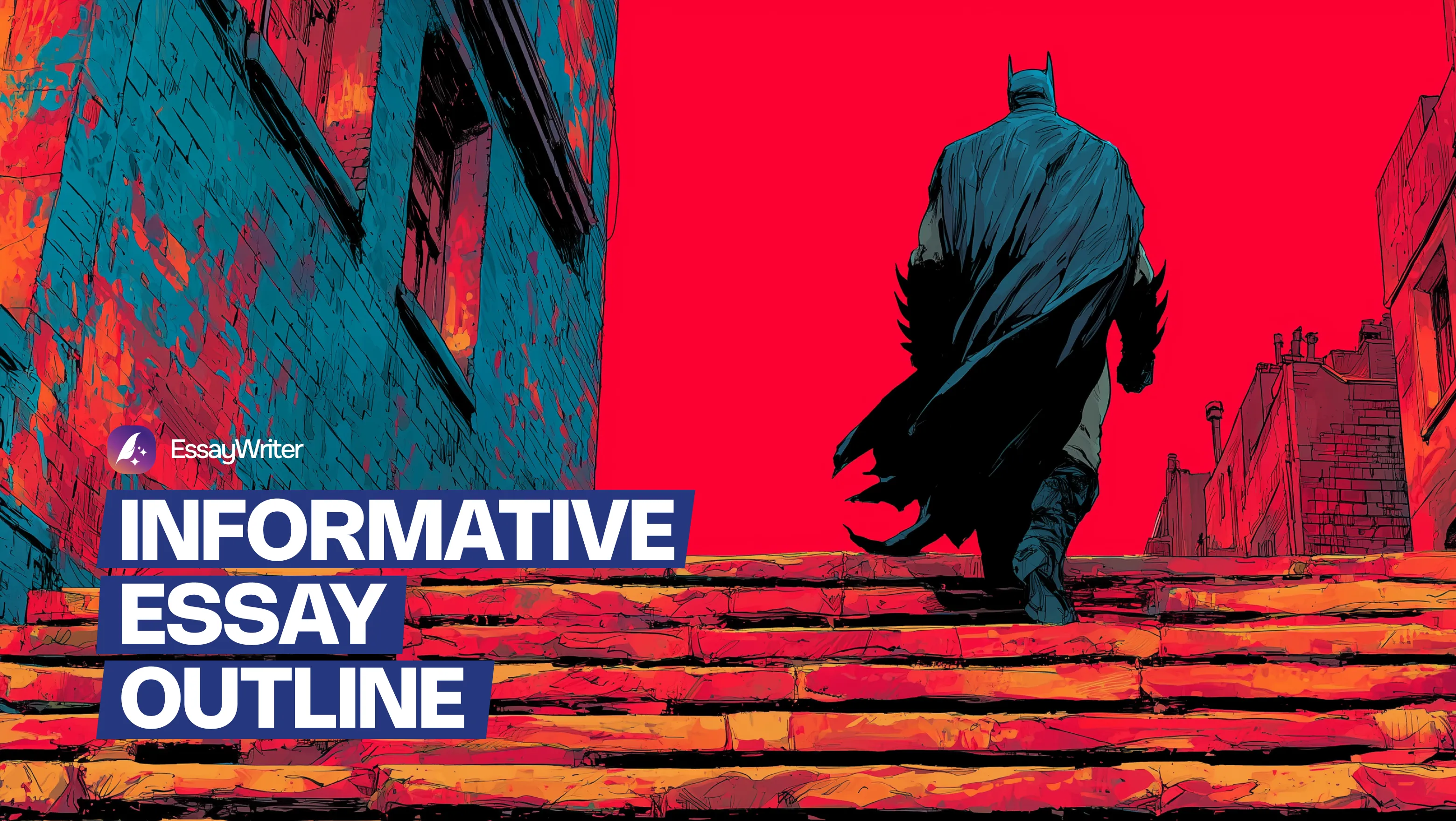

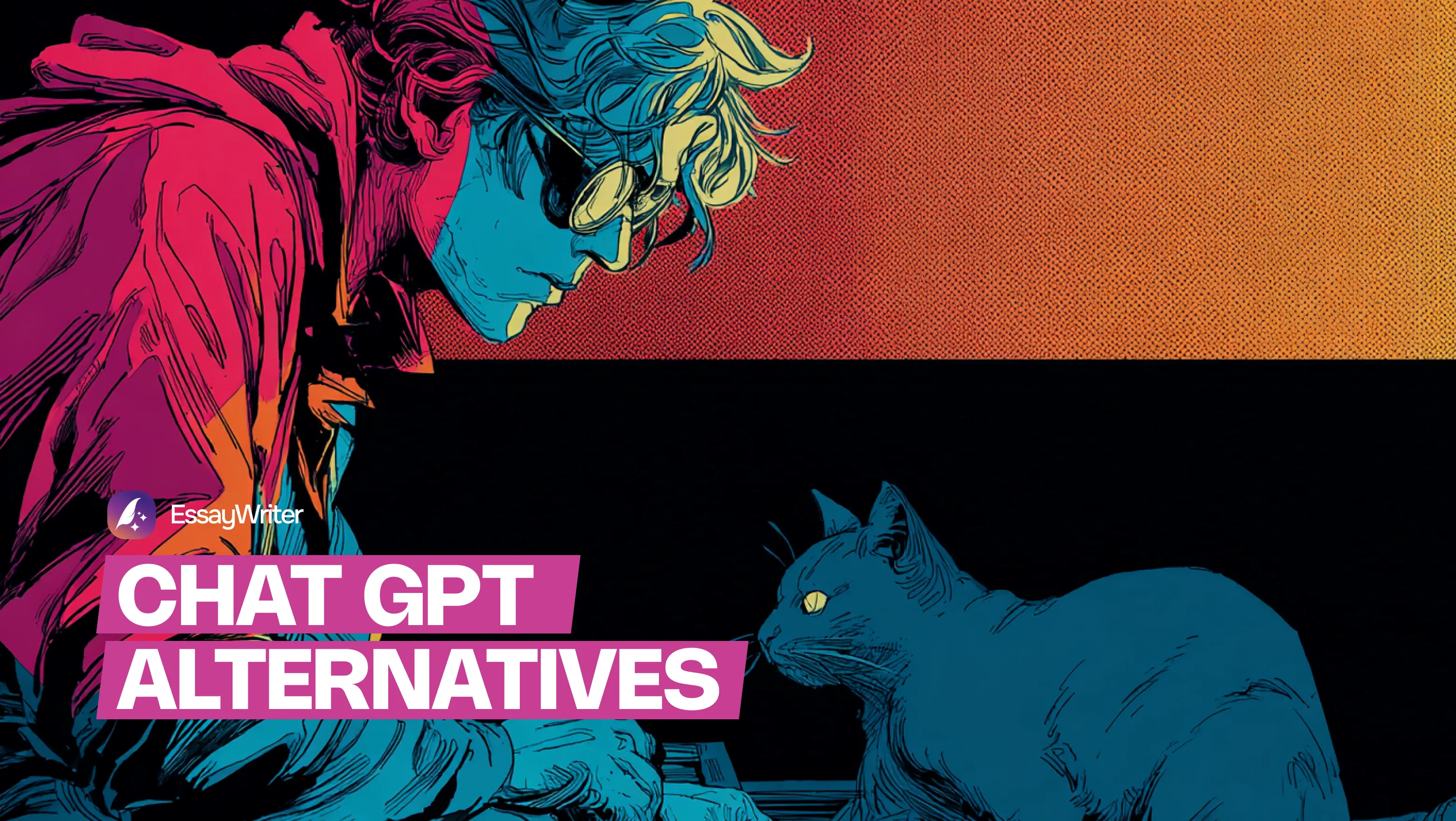


.webp)





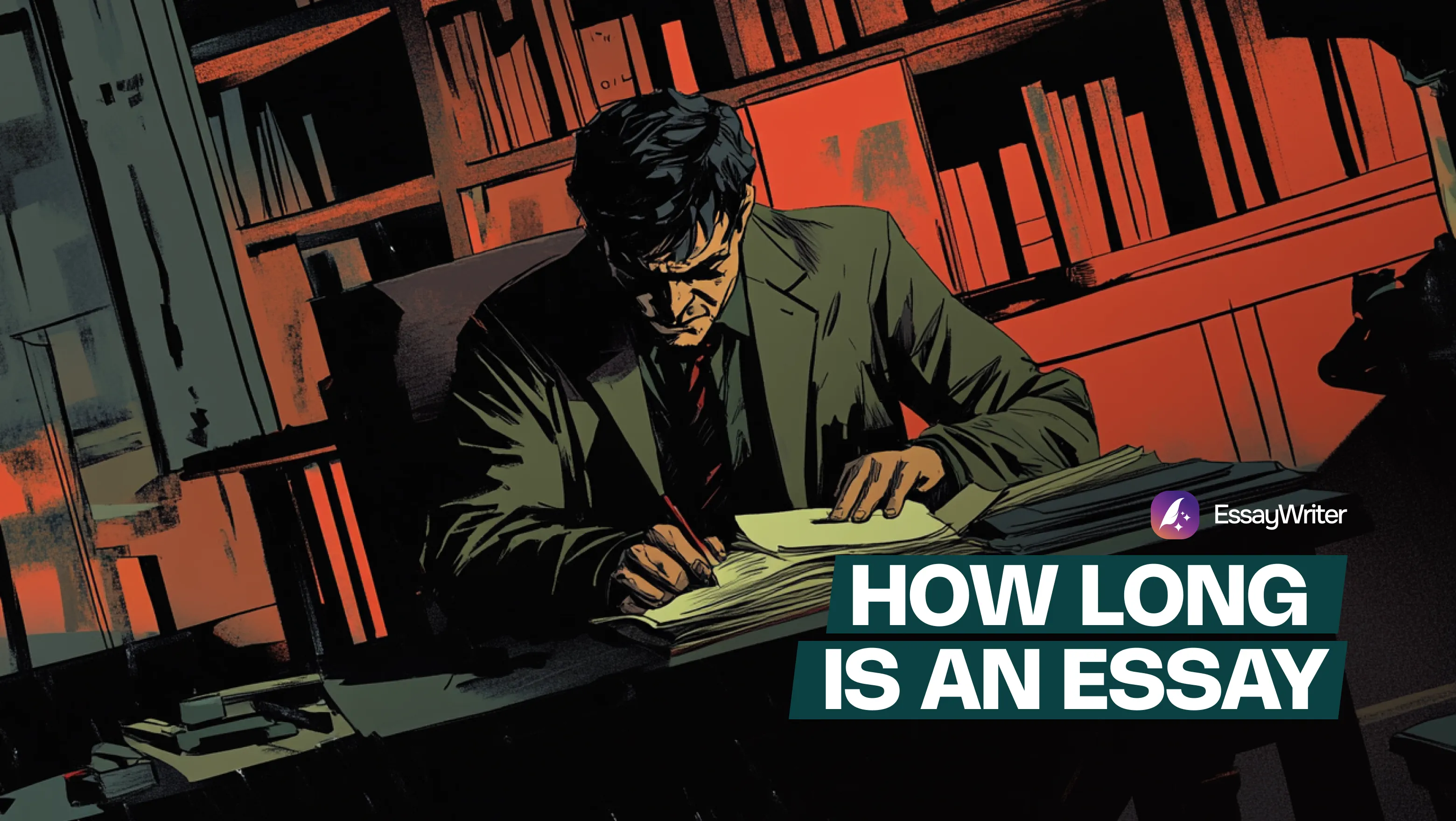
.webp)
.webp)
